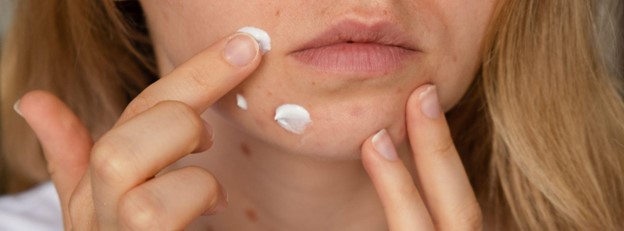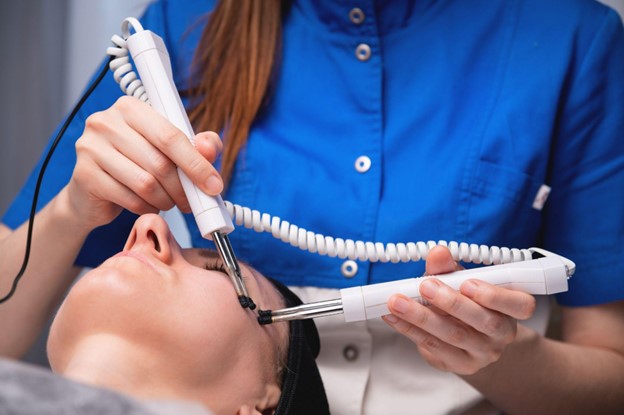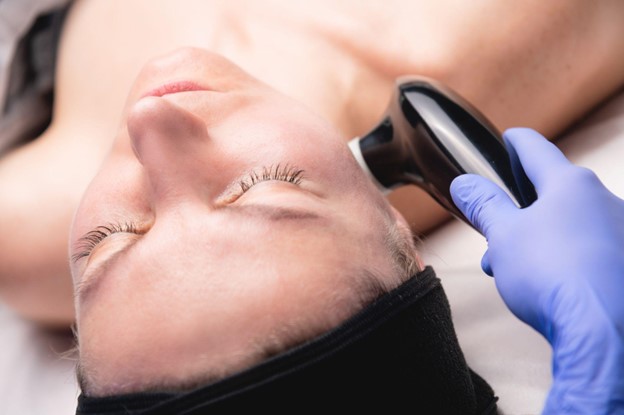×
Login Form
×
Registration
Profile Informations
Login Datas
or login
Acne Scars Filler Injections vs. Other Scar Treatments: Which Is Right for You?
9/25/2025 1:00 AM
Posted By Activa Derma
Acne Scars Filler Injections vs. Other Scar Treatments: Which Is Right for You?
Dealing with acne scars can feel like fighting a battle that continues long after the original breakouts have cleared. These persistent reminders of past skin troubles affect millions of people worldwide, creating not just physical marks but emotional challenges as well. While acne itself is temporary, the scars it leaves behind can last for years without proper treatment.
The good news? Modern dermatology offers multiple effective solutions for treating acne scars, each with its own advantages and considerations. From traditional approaches like chemical peels to innovative treatments such as acne scar filler injections, patients today have more options than ever before. Understanding these different treatments and how they compare can help you make the best choice for your skin's unique needs.

Understanding Acne Scars and Treatment Options
Acne scars develop when inflammatory acne damages the skin's deeper layers, disrupting the normal healing process. The severity and type of scarring depend on factors like genetics, skin type, and how the original acne was treated or managed.
Types of Acne Scars
Acne scars fall into three main categories, each requiring different treatment approaches:
- Atrophic scars: These depressed scars are the most common type, appearing as indentations in the skin. They include icepick scars (deep, narrow holes), boxcar scars (wider depressions with defined edges), and rolling scars (wave-like indentations).
- Hypertrophic scars: These raised scars occur when the body produces too much collagen during healing, creating elevated areas on the skin's surface.
- Keloid scars: Similar to hypertrophic scars but more severe, keloids extend beyond the original wound area and can continue growing over time.
Available Treatment Options
The treatment landscape for acne scars includes several proven methods:
- Dermal filler injections for acne scars
- Chemical peels
- Laser therapy
- Microneedling
- Surgical procedures
- Topical treatments
Each option works differently and suits various scar types and patient preferences.
How Acne Scars Filler Injections Work
Acne scar filler injections represent a minimally invasive approach to treating depressed acne scars. This treatment involves injecting specially formulated substances beneath the skin's surface to lift and smooth scarred areas.
The Science Behind Fillers
Dermal filler injections for acne scars work by adding volume to depressed areas, effectively raising them to match the surrounding skin level. The fillers also stimulate natural collagen production, which helps improve skin texture and firmness over time. This dual action makes filler treatments particularly effective for rolling and some boxcar scars.
Types of Fillers Used
Several types of fillers are commonly used for acne scar treatment:
- Hyaluronic acid fillers: These temporary fillers last 6-18 months and provide natural-looking results with minimal risk
- Poly-L-lactic acid: This bio-stimulating filler gradually increases collagen production for longer-lasting improvements
- Calcium hydroxylapatite: These semi-permanent fillers offer durability and natural collagen stimulation
The Injection Process
The treatment process for acne scar filler injections is straightforward and typically completed in a single office visit. After cleansing the treatment area, the practitioner uses fine needles to inject small amounts of filler directly into or beneath the scarred areas. Most patients experience only mild discomfort, and topical numbing cream can be applied for additional comfort.

Expected Results
Results from dermal filler injections for acne scars are usually visible immediately, though final results may take a few days as any swelling subsides. The improvement in scar appearance can be significant, particularly for rolling scars and shallow boxcar scars. Most patients see 50-80% improvement in treated areas, with results lasting anywhere from several months to over a year, depending on the filler type used.
Comparing Acne Scars Filler Injections to Other Popular Scar Treatments
Understanding how different treatments compare helps patients make informed decisions about their scar treatment approach.
Acne Scars Filler Injections vs. Chemical Peels
Chemical peels use acids to remove damaged skin layers, promoting new skin growth and reducing scar appearance. While effective for surface-level scarring and overall skin texture, chemical peels work differently from acne scar filler injections.
Key differences include:
- Timeline: Chemical peels require multiple sessions over several months, while filler injections provide immediate results
- Downtime: Peels often involve significant peeling and recovery time, whereas fillers have minimal downtime
- Scar types: Peels work best for shallow, surface-level scars, while fillers excel at treating deeper depressions
Acne Scars Filler Injections vs. Laser Treatments
Laser therapy uses focused light energy to resurface skin and stimulate collagen production. Various laser types target different aspects of acne scarring, from surface texture to deep remodeling.
Comparison points:
- Precision: Lasers can target specific areas with extreme accuracy, while fillers add volume to broader areas
- Recovery: Laser treatments often require more extended healing periods with potential redness and swelling
- Effectiveness: Both treatments can be highly effective, but laser therapy may require multiple sessions for optimal results
Acne Scars Filler Injections vs. Microneedling

Microneedling creates controlled micro-injuries in the skin to stimulate natural healing and collagen production. This treatment improves overall skin texture and can reduce the appearance of various scar types.
Notable differences:
- Mechanism: Microneedling relies on the body's natural healing response, while fillers provide immediate volume replacement
- Cost: Microneedling typically costs less per session but requires multiple treatments
- Maintenance: Filler results are temporary and require touch-ups, while microneedling benefits can be longer-lasting with proper skin care
Making an Informed Decision About Acne Scar Treatment
Choosing the proper acne scar treatment depends on several individual factors that should be carefully considered with a qualified dermatologist or cosmetic practitioner.
Factors to Consider
When evaluating treatment options, consider these critical elements:
- Scar type and severity: Deep, depressed scars may respond better to fillers, while surface-level scarring might benefit more from peels or microneedling
- Skin type and sensitivity: Some treatments work better on certain skin types or may not be suitable for sensitive skin
- Budget and timeline: Consider both immediate costs and long-term maintenance requirements
- Lifestyle and downtime tolerance: Some treatments require significant recovery time that may not fit your schedule
Professional Consultation
A thorough consultation with a qualified professional is essential for determining the best treatment approach. During this consultation, expect a detailed skin analysis, discussion of treatment goals, and review of potential risks and benefits for each option.
Combination Approaches
Many patients achieve optimal results by combining different treatments. For example, acne scar filler injections might be used to address deep depressions, while microneedling improves overall skin texture. Your practitioner can develop a comprehensive treatment plan that addresses your specific scar pattern and skin concerns.
The journey to smoother, clearer skin doesn't have to be complicated. By understanding the different treatment options available and working with qualified professionals, you can develop an effective strategy for addressing acne scars. Whether you choose filler injections, alternative treatments, or a combination approach, the key is selecting options that align with your specific needs, goals, and lifestyle.
Remember that treating acne scars is often a gradual process that requires patience and realistic expectations. With the right treatment plan and professional guidance, significant improvement in acne scar appearance is achievable for most patients.
Combination Approaches for Acne Scar Treatment
Many patients benefit from using multiple treatments in tandem to achieve optimal results. Combining acne scar filler injections with microneedling, chemical peels, or laser therapy allows for both immediate improvement and long-term skin texture enhancement.
For example, filler injections can correct deeper depressions, while microneedling stimulates collagen production to improve overall skin smoothness. Chemical peels or laser treatments may be used to enhance skin tone and surface quality.
Setting Realistic Expectations
It is important to remember that acne scar treatment is a gradual process. Individual results vary depending on scar type, skin health, and treatment consistency. While some improvements are visible immediately, optimal results typically emerge over weeks or months.
Patients should work closely with their dermatologists or cosmetic practitioners to track progress and adjust the treatment plan as needed. Patience and adherence to post-treatment care instructions are key to achieving the best results.
Post-Treatment Care and Maintenance
After acne scar filler injections, proper post-treatment care ensures the best outcomes and minimizes complications:
- Avoid massaging or applying pressure to treated areas for a few days
- Follow the practitioner’s recommendations regarding skincare routines and sun protection
- Schedule follow-up visits to monitor healing and discuss potential touch-ups
- Maintain a healthy lifestyle, including hydration and a balanced diet, to support skin health
Regular maintenance treatments, such as periodic filler injections, may be advised depending on individual response and the type of filler used. These follow-ups help sustain results and prolong improvements in skin appearance.
Comparing Costs and Accessibility
Acne scar treatments vary widely in cost, duration, and accessibility. Filler injections may have a higher upfront cost but provide immediate, visible results with minimal downtime. In contrast, treatments like microneedling or chemical peels are generally less expensive per session but may require multiple visits for optimal outcomes.
Patients should balance budget considerations with desired results, treatment convenience, and recovery time when choosing an approach. Consulting with a qualified professional ensures cost-effective and appropriate treatment selection.
Choosing the Right Treatment for You
Selecting the appropriate acne scar treatment requires careful evaluation of several factors:
- Scar depth and type: Deeper atrophic scars often respond best to filler injections, while surface-level irregularities may benefit more from peels or microneedling
- Skin sensitivity: Some treatments may be unsuitable for highly sensitive or reactive skin types
- Recovery preferences: Consider downtime requirements when planning treatments around work or lifestyle commitments
- Long-term goals: Determine whether you want immediate improvements, long-term skin remodeling, or a combination of both


